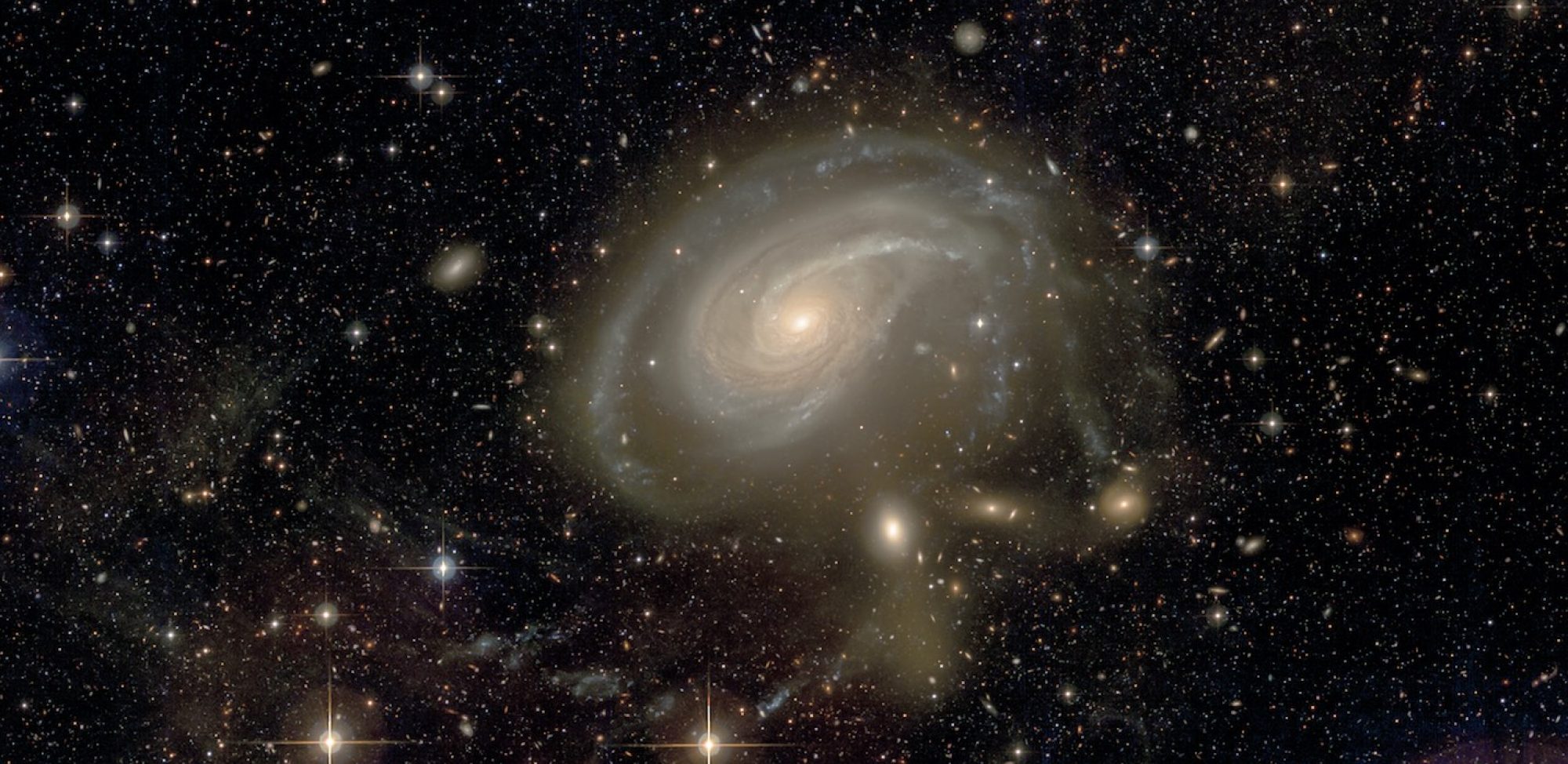Merging star clusters in dwarf galaxies
Evidence of star cluster migration and merger in dwarf galaxies

Nuclear star clusters (NSCs) are the densest stellar systems in the Universe. These clusters can be found at the centre of all galaxy types but tend to favour galaxies of intermediate stellar mass around 109M⊙ (refs. 1,2). At present, two main processes are under debate to explain their formation: in situ star formation from gas infall3 and migration and merging of globular clusters (GCs) caused by dynamical friction4. Studies5–9 of NSC stellar populations suggest that the former predominates in massive galaxies, whereas the latter prevails in dwarf galaxies, and both contribute equally at intermediate mass. However, until now, no ongoing merger of GCs has been observed to confirm this scenario. Here we report the serendipitous discovery of five dwarf galaxies with complex nuclear regions, characterized by multiple nuclei and tidal tails, using high-resolution images from the Hubble Space Telescope. These structures have been reproduced in complementary N-body simulations, supporting the interpretation that they result from migrating and merging of star clusters. The small detection rate and short simulated timescales (below 100 Myr) of this process may explain why this has not been observed previously. This study highlights the need for large surveys with high resolution to fully map the migration scenario steps.
Poulain et al., 2025, Nature 640, 902
Protected: Low Surface Brightness structures from annotated deep CFHT images: effects of the host galaxy’s properties and environment
Dwarf Galaxies in the MATLAS Survey: Hubble Space Telescope Observations of the Globular Cluster Systems of 74 Ultra Diffuse Galaxies

Ultra diffuse galaxies, characterized by their low surface brightness and large physical size, constitute a subclass of dwarf galaxies that challenge our current understanding of galaxy formation and evolution. In this paper, we probe the properties of 74 UDGs, identified in the MATLAS survey, based on a comprehensive study of their globular cluster (GC) populations. We obtained high resolution HST imaging of these galaxies using the ACS F606W and F814W filters, allowing us to select GCs based on color and concentration index.
Continue reading “Dwarf Galaxies in the MATLAS Survey: Hubble Space Telescope Observations of the Globular Cluster Systems of 74 Ultra Diffuse Galaxies”Panoptic Segmentation of Galactic Structures in LSB Images

We explore the use of deep learning to localise galactic structures in low surface brightness (LSB) images. LSB imaging reveals many interesting structures, though these are frequently confused with galactic dust contamination, due to a strong local visual similarity. We propose a novel unified approach to multi-class segmentation of galactic structures and of extended amorphous image contaminants. Our panoptic segmentation model combines Mask R-CNN with a contaminant specialised network and utilises an adaptive preprocessing layer to better capture the subtle features of LSB images.
Continue reading “Panoptic Segmentation of Galactic Structures in LSB Images”Multi-scale gridded Gabor attention for cirrus segmentation (associated paper)

annotations (middle) and predictions (bottom)
In this paper, we address the challenge of segmenting global contaminants in large images. The precise delineation of such structures requires ample global context alongside understanding of textural patterns. CNNs specialise in the latter, though their ability to generate global features is limited. Attention measures long range dependencies in images, capturing global context, though at a large computational cost. We propose a gridded attention mechanism to address this limitation, greatly increasing efficiency by processing multi-scale features into smaller tiles.
Continue reading “Multi-scale gridded Gabor attention for cirrus segmentation (associated paper)”Protected: Dwarf Galaxies in the MATLAS Survey: The satellite system of NGC 474 under scrutiny with MUSE
A stream come true: Connecting tidal tails, shells, streams, and planes with galaxy kinematics and formation history

Context. The rapidly improving quality and resolution of both low surface brightness observations and cosmological simulations of galaxies enable us to address the important question of how the formation history is imprinted in the outer unrelaxed regions of galaxies, and to inspect the correlations of these imprints with another tracer of galaxy formation, the internal kinematics.
Aims: Using the hydrodynamical cosmological simulation called Magneticum Pathfinder, we identified tidal tails, shells, streams, and satellite planes, and connected them to the amount of rotational support and the formation histories of the host galaxies. This presents the first combined statistical census considering all these four types of features in hydrodynamical cosmological simulations.
Methods: Tidal features were visually classified from a three-dimensional rendering of the simulated galaxies by several scientists independently. Only features that were identified by at least half of the participating individuals were considered to be existing features. The data on satellite planes and kinematic properties of the simulated galaxies were taken from previous work. The results were compared to observations, especially from the MATLAS survey.


